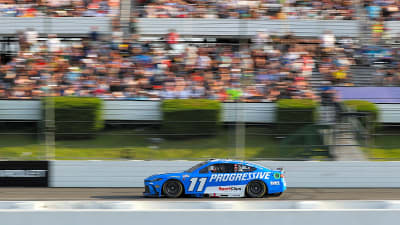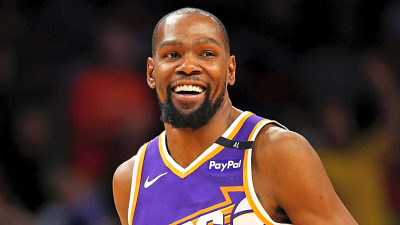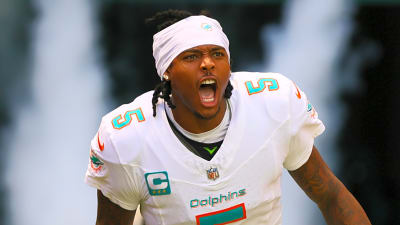
Kentucky Derby 2025 winner Sovereignty will not run in the Preakness Stakes on May 17th, eliminating the potential for a Triple Crown winner.
The decision to withhold Sovereignty from chasing the Triple Crown marks the fifth time in the past seven years that the Kentucky Derby winner will not run in the Preakness. Mystik Dan (2024) and Mage (2023) were the last two Derby winners to run in the Preakness. Both horses ran well at Pimlico Race Course but failed to ride into the winner’s circle. Mystik Dan finished in second place while Mage finished in third place.
Why Sovereignty and Other Derby Winners Skip The Preakness
So, why are we seeing this trend more often?
The chase for the Triple Crown can be grueling on modern-day horses, which are bred more for speed than stamina and durability. There is only six weeks between the Kentucky Derby and the Belmont Stakes, the final jewel of the Triple Crown. Each leg increases in distance, culminating in the Belmont’s 1½ miles, which is rarely run and extremely taxing.
However, the exhausting schedule is only part of the problem.
“We want to do what’s best for the horse,” Mott told reporters at Churchill Downs in Louisville, Kentucky. “Of course, you always think about a Triple Crown, and that’s not something we’re not going to think about.”
Mott’s statement reflects a broader shift in priorities across horse racing.
While Mott and Godolphin LLC have said that Sovereignty would not be running in the Preakness Stakes in order to do what’s best for the horse, there’s another reason that many Kentucky Derby winners don’t chase the Triple Crown — preserving the value of the stud fee for years to come.
Ultimately, it comes down to long-term value.
Trainers now prioritize long-term health and stud value, often opting to skip races, especially the Preakness, to avoid overexertion or injury
How Skipping The Preakness Stakes Affects Future Stud Fees
| Preakness Participation | Average Stud Fee |
| No | 7,000 |
| Yes | 225,000 |
| Triple Crown Winner | 34,000 |
A Kentucky Derby victory massively increases stud value, so there’s often no financial incentive to run in the Preakness if Triple Crown hopes are slim. The Preakness doesn’t add much to a stallion’s résumé unless he wins it. The risk of overexertion, injury, or simply running a bad race isn’t worth jeopardizing the future.
Kentucky Derby winners who skip the Preakness can still command an average stud fee of $7,000. While that doesn’t seem like a high number, consider that 2023 winner Mage bred 171 mares in his first breeding season. With a stud fee starting at $25,000, that amounts to $4,275,000.
The last Triple Crown winner was Justify in 2018 and his stud fee has since risen to $250,000. Meanwhile, 2015 Triple Crown winner American Pharoah once commanded a stud fee as high as $200,000. Over 10 years later, his stud fee still sits at a healthy $45,000.
Skipping the Preakness Stake altogether comes at a cost though. Kentucky Derby winners who have run in the Preakness command an average stud fee of $34,000 at their peak, 485% more than horses who skip Pimlico.
Kentucky Derby Winner Stud Fees (2015-2025)
Here is the highest stud fee commanded by Kentucky Derby winners since 2015.
| Year | Derby Winner | Preakness Participation | Highest Stud Fee |
| 2025 | Sovereignty | No | TBD |
| 2024 | Mystik Dan | Yes | TBD |
| 2023 | Mage | Yes | 25,000 |
| 2022 | Rich Strike | No | 6,500 |
| 2021 | Mandaloun | Yes (by DQ) | 25,000 |
| 2020 | Authentic | Yes (2nd place) | 75,000 |
| 2019 | Country House | No | 7,500 |
| 2018 | Justify | Yes (Triple Crown) | 250,000 |
| 2017 | Always Dreaming | Yes | 25,000 |
| 2016 | Nyquist | Yes | 20,000 |
| 2015 | American Pharoah | Yes (Triple Crown) | 200,000 |
More must-reads:
- Mavericks ink Daniel Gafford to a huge three-year extension
- Kevin Durant’s stance toward Rockets extension revealed
- The '2023 MLB home run leaders' quiz
Breaking News
Trending News
Customize Your Newsletter
 +
+
Get the latest news and rumors, customized to your favorite sports and teams. Emailed daily. Always free!








